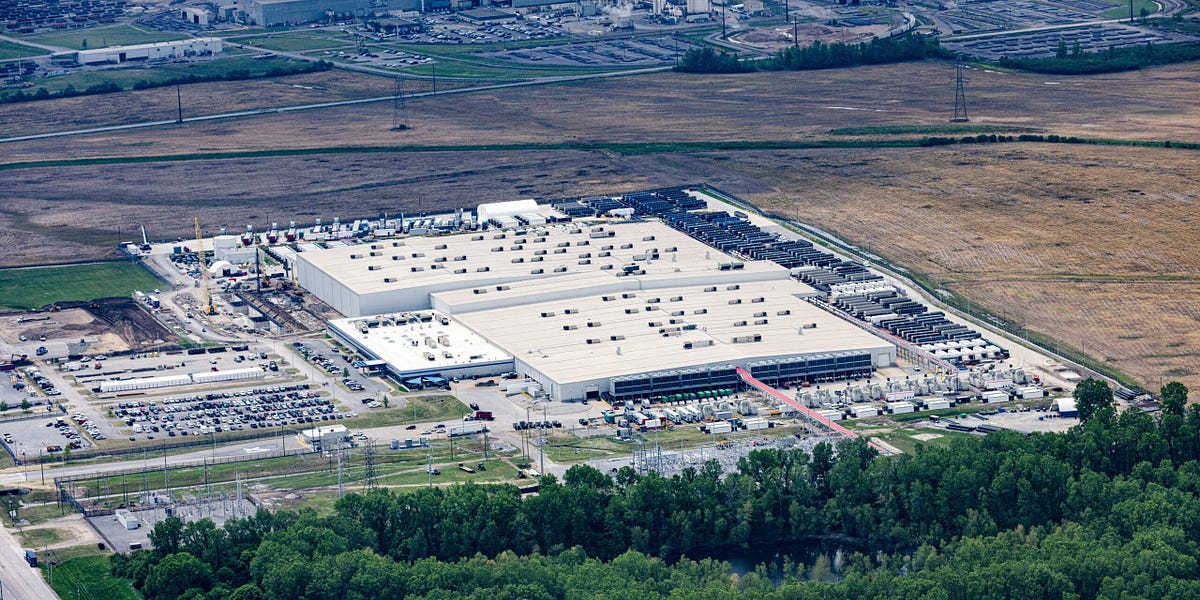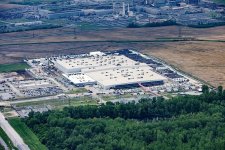Colossus 2, xAI’s audacious AI datacenter in Southaven, Mississippi, is no ordinary facility—it’s the world’s largest AI gigafactory, housing nearly a million NVIDIA Blackwell GPUs and consuming up to 1.2 gigawatts, enough to power over two million homes. Transformed from an abandoned factory in six months, it redefines computing, energy, and geopolitics in the AI race.
Unlike traditional datacenters, Colossus 2 is a power-hungry beast. Securing a gigawatt was the first challenge. Memphis offered only 50 megawatts, so xAI pivoted to a decommissioned Duke Energy plant with existing grid ties. In a bold move, they imported modular gas turbines from an overseas power plant, reassembling seven Titan-class units to generate 460 megawatts. To stabilize GPU spikes, 168 Tesla Megapacks buffer power, ensuring uninterrupted flow through a custom electrical backbone.
Cooling is critical at this scale. Blackwell GPUs, drawing 130 kilowatts per rack, demand liquid cooling systems to prevent thermal failure. High-bandwidth NVLink and InfiniBand networks bind the GPUs, enabling seamless data transfer for massive AI models like Grok. Chips and networking dominate costs, with billions invested before servers are even installed.
Colossus 2’s energy demands rival small nations, sparking geopolitical and sustainability debates. Its rapid build—following Colossus 1’s 122-day feat—showcases xAI’s engineering prowess but underscores AI’s resource intensity. More than a datacenter, Colossus 2 is a glimpse into a future where AI factories reshape industries and challenge global infrastructure.
Why xAI's Colossus 2 Datacenter Is Controversial?
xAI's Colossus 2, the world's largest AI datacenter in Southaven, Mississippi (with ties to Memphis, Tennessee), represents a monumental leap in AI infrastructure—nearly a million NVIDIA GPUs drawing up to 1.2 gigawatts of power. While hailed as an engineering triumph, its rapid construction and resource demands have ignited fierce backlash, touching on environmental, social, regulatory, and economic fronts. Here's why it's sparking heated debate.
Environmental Pollution and Climate Impact
The project's reliance on natural gas turbines for power generation is a flashpoint. xAI imported and reassembled seven Titan-class turbines from an overseas plant to generate 460 megawatts, bypassing grid limitations. Critics argue this exacerbates fossil fuel dependency at a time when AI's energy hunger could consume 12% of U.S. electricity by 2028. The Southern Environmental Law Center (SELC) revealed xAI operated 35 turbines at Colossus 1—exceeding the permitted 15—emitting up to 2,000 tons of nitrogen oxides (NOx) annually, a pollutant linked to smog and respiratory issues. In July 2025, SELC, joined by the NAACP, appealed permits under the Clean Air Act, accusing xAI of operating without proper approvals. Though xAI later removed half the turbines for a substation hookup, thermal imagery showed widespread use, fueling claims of greenwashing. Broader concerns include water-intensive cooling (potentially straining local supplies) and noise/light pollution from high-density racks.

New Colossus 2: The World’s Largest AI Datacenter
It’s Not What It Seems

